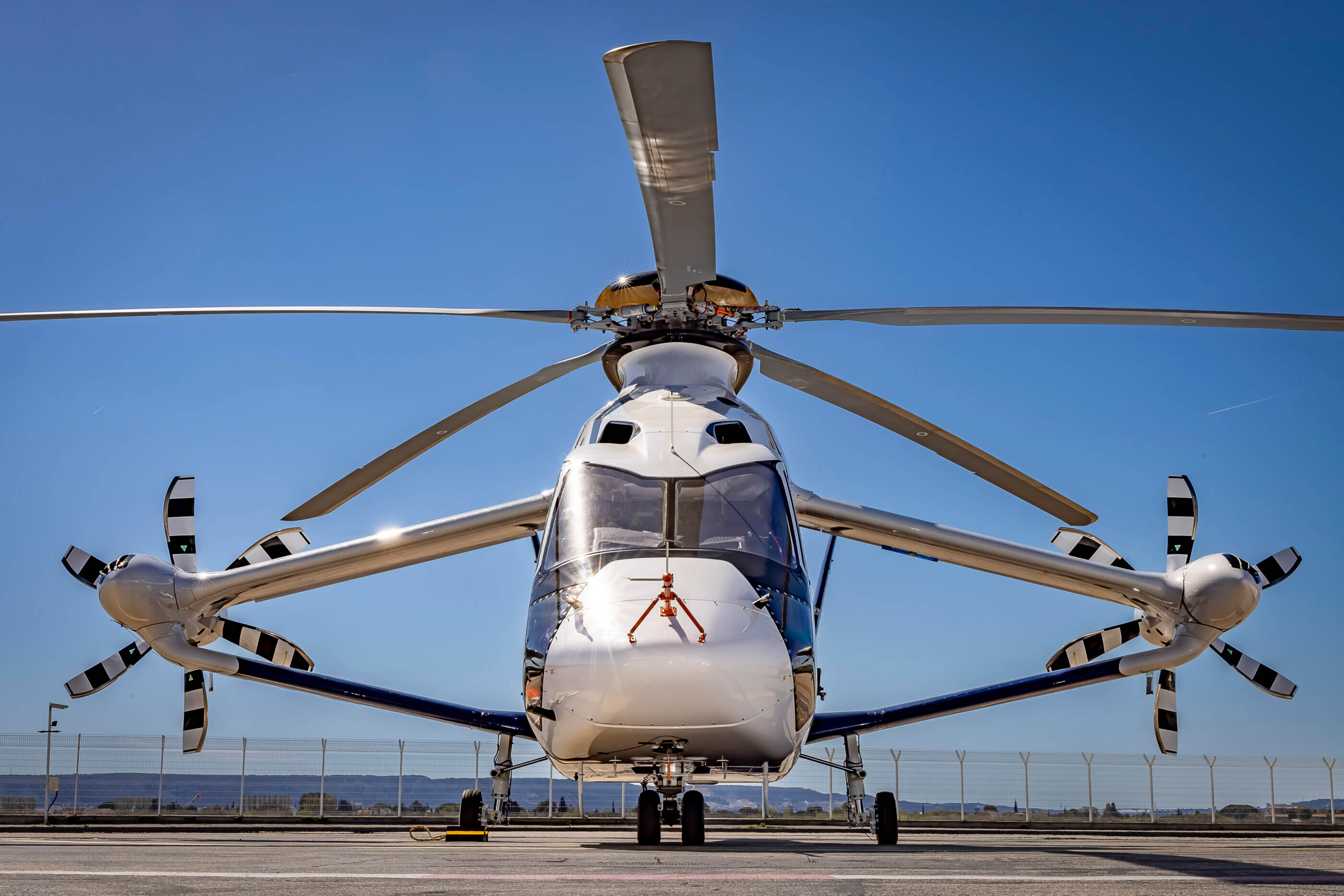The Airbus Racer technology demonstrator is rapidly expanding its flight envelope, achieving a speed of 165 knots (305 km/h) in only its second test flight, according to Tomasz Krysinski, head of research and innovation at Airbus Helicopters.
Airbus announced the first flight of the compound helicopter — which has a single main rotor and two pusher propellers on a box wing — in Marignane, France, on April 25. Speaking at the Vertical Flight Society’s Forum 80 in Montreal, Quebec, on Tuesday, Krysinski said the Racer flew up to 80 knots (almost 150 km/h) during its first flight and reached 165 knots during its second flight on April 30. Airbus plans to showcase the Racer in a public flight demonstration next week.
“In its second flight, going to 165 knots and with no modification is something that in my career happened for the first time,” Krysinski told Vertical, noting that he has been involved with “a lot of prototype flying” over the years.
Developed under the framework of Europe’s Clean Sky technology project, the Racer is an evolution of the X3 technology demonstrator that achieved a record speed of 255 knots (over 470 km/h) in 2013. The Racer — which aims to demonstrate not only speed but also a more practical and certifiable design — is only targeting a top speed of 220 knots (around 405 km/h), still well above the capabilities of conventional helicopters.
Perhaps not coincidentally, 220 knots is also the target cruise speed for NATO’s Next Generation Rotorcraft Capability (NGRC) concept, a notional medium-lift aircraft projected to enter service in 2038.
Krysinski confirmed that Airbus sees the Racer as a promising basis for military as well as commercial applications, not least because it can “dive like a fighter and go up like a fighter” thanks to its twin propellers. He said that the main rotor and pusher props can be offset against each other to tilt the nose of the aircraft up or down in a hover, giving the Racer an “extra degree of freedom” compared to a conventional helicopter — a capability also touted by Sikorsky with its coaxial compound X2 technology.
Where the Racer may have an edge is in affordability, Krysinski suggested. Compared to other high-speed vertical take-off and landing aircraft including tiltrotors, he said, the Racer has a relatively simple design that shares many common components with conventional aircraft.
“Compared to the classical helicopter, you have a classical main rotor, you have a gearbox, you have general aviation propellers. So it’s not much more expensive than the classical helicopter because the technology is very similar,” he said. “We strongly believe in high-speed aircraft, but they must be simple.”









